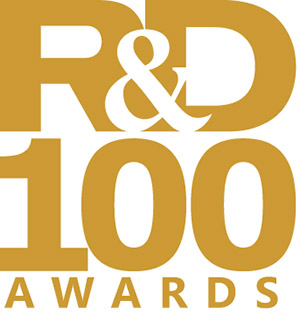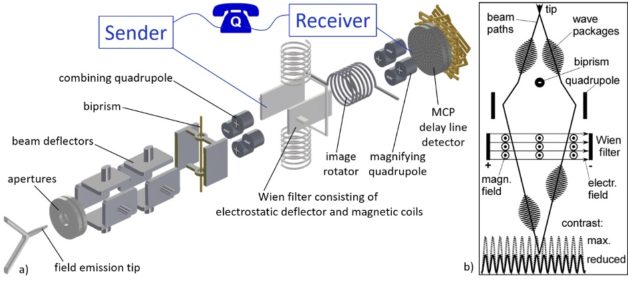Article adapted from the Berkeley Lab Newscenter

For more than 50 years, the annual R&D 100 Awards have recognized 100 technologies of the past year deemed most innovative and disruptive by an independent panel of judges. The full list of winners, announced by parent company WTWH Media LLC is available at the R&D World website.
The two winners are described below
Matter-Wave Modulating Secure Quantum Communicator (MMQ-Com)

Quantum communication, cybersecurity, and quantum computing are growing global markets. But the safety of our data is in peril given the rise of quantum computers that can decode classical encryption schemes.
The Matter-Wave Modulating Secure Quantum Communicator (MMQ-Com) technology is a fundamentally new kind of secure quantum information transmitter. It transmits messages by modulating electron matter-waves without changing the pathways of the electrons. This secure communication method is inherently impervious to any interception attempt.
A novel quantum key distribution scheme also ensures that the signal is protected from spying by other quantum devices.
The development team includes Alexander Stibor, a Research Scientist at the Molecular Foundry, along with Robin Röpke and Nicole Kerker of the University of Tübingen in Germany.
Porous Graphitic Frameworks for Sustainable High-Performance Li-Ion Batteries

The Porous Graphitic Frameworks (PGF) technology is a lithium-ion battery cathode that could outperform today’s cathodes in sustainability and performance.
In contrast to commercial cathodes, organic PGFs pose fewer risks to the environment because they are metal-free and composed of earth-abundant, lightweight organic elements such as carbon, hydrogen, and nitrogen. The PGF production process is also more energy-efficient and eco-friendly than other cathode technologies because they are prepared in water at mild temperatures, rather than in toxic solvents at high temperatures.
PGF cathodes also display stable charge-discharge cycles with ultrahigh capacity and record-high energy density, both of which are much higher than all commercial inorganic cathodes and organic cathodes known to exist.
The development team includes Yi Liu, Facility Director of the Foundry’s Organic and Macromolecular Synthesis facility, as well as Xinie Li of the Molecular Foundry, and Hongxia Wang and Hao Chen of Stanford University.

